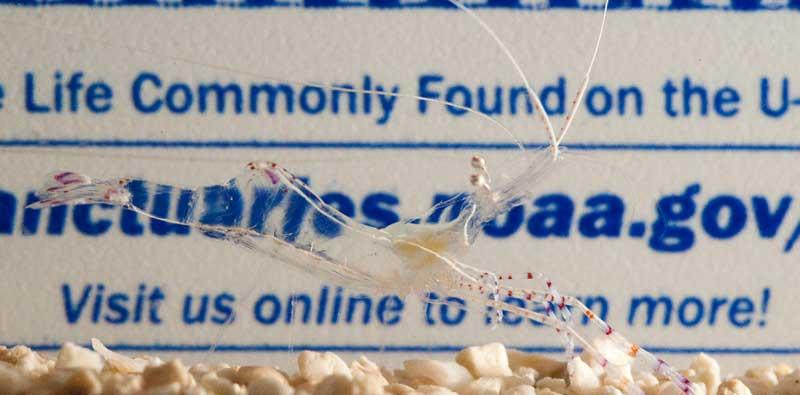
Imagine scuba diving 25 miles off the coast of Belize. The ocean floor is 3,000 feet below. In the vast blue sea, a skinny boat line is all that tethers you to humanity.
Suddenly, you sense thousands of tiny ocean creatures surrounding you, but you can’t see them. A nine-foot shark approaches from the abyss. Would you panic?
Duke Ph.D. student Laura Bagge didn’t. She was thrilled for the experience, except for the shark.
Bagge studies crustaceans like shrimp that are so clear you can read a newspaper through their bodies. Her research explores the questions: Why are so many sea animals transparent? And how do they do it?
A summer research fellowship, made possible by a planned gift from a 1921 Duke graduate, is helping her solve these mysteries.

Bagge received the Ray J. Tysor Graduate Research Fellowship, which brought her to a tiny island science station run by the Smithsonian Institute.
There, she collected and observed transparent shrimps in their natural habitat. While Bagge’s research interest is exclusively in discovery, there are a number of applications in unlocking the key to true camouflage, especially for national defense.
Bagge’s benefactor, Ray Tysor, is a man she’ll never get to meet, but feels grateful to every day.
“Many grad students have to teach at a community college or get some other job during the summer, but I didn’t have to,” Bagge says. “Fellowships like mine help you move forward on your research, publish, and finish on time.”
Although Tysor passed away in 1986, his family says he cared deeply about Duke, education, and the natural world.
“Who knows what breakthroughs or discoveries will result from the hard work and groundbreaking research of these fellowship students in the coming years—whether in the fields of medicine, the environment, or some other discipline,” Tysor’s daughter-in-law, Terri Robinson, says.
Bagge’s work in Belize led her to new discoveries that are transforming her research. She discovered that the shrimps’ transparency is a changeable state; her specimens become opaque under stress. The fellowship also enabled her to meet other professors in the field, and she plans to publish a research paper in a scientific journal. A popular national science magazine even wrote an article about her work—outcomes that can advance her career.
“I had no way to pursue this research without financial help,” Bagge says. “Giving a gift like this can make a huge difference in helping students reach their goals.”
Tysor’s family, many of whom are also Duke alumni, says his generosity continues to challenge their family to think about how they can continue to give back.
“We feel honored that Ray’s gift sets such a wonderful example of giving back,” Robinson says. “We like to think that Ray envisioned his donation providing opportunities for graduate students to learn and make scientific discoveries that make our world better for everyone.”

This story was originally published as an advertorial in Duke Magazine